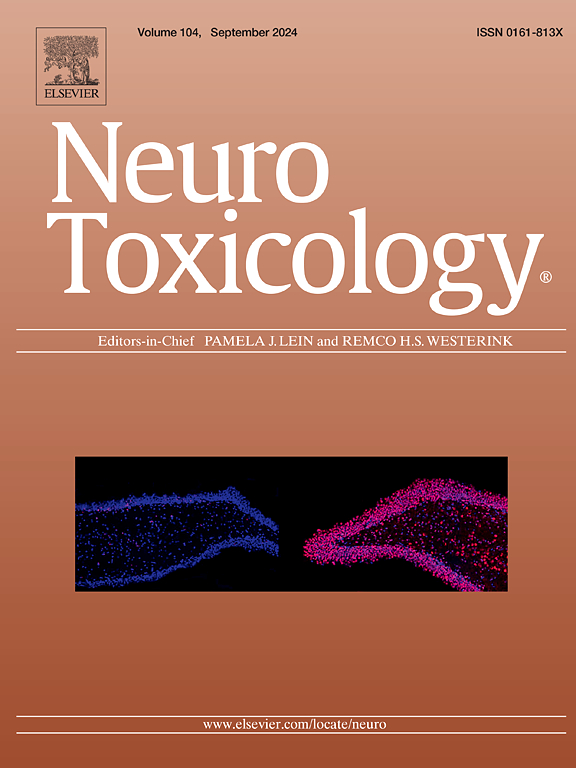2,4,6-trinitrotoluene induces neurotoxicity by affecting the G protein pathways in Caenorhabditis elegans
IF 3.9
3区 医学
Q2 NEUROSCIENCES
引用次数: 0
Abstract
2,4,6-trinitrotoluene (TNT) is a chemical widely used to make explosives, and its use of residues can lead to potential threats to both ecosystems and human health. A thorough understanding of the various toxic effects of TNT is essential for developing effective environmental protection and health safety measures. Thus, we employed Caenorhabditis elegans (C. elegans), a typical model organism, to explore the neurotoxic effects of TNT and the signaling pathways involved. The results showed that neurotoxicity induced by 10–100 ng/mL TNT was manifested in reduced behavioral capacity (head thrashes, body bends, and pharyngeal pumping rates), and inhibition of foraging behavior and ethanol avoidance behavior. Using fluorescence-labeled transgenic nematodes, it was found that TNT damaged dopaminergic and cholinergic neurons, which resulted in a significant decrease in the release of neurotransmitters and the expression of associated genes (dat-1 and unc-17). We studied the role of G protein signaling pathways and discovered that the related genes (egl-30, gsa-1, goa-1, and unc-13) were significantly down-regulated, resulting in reduced acetylcholine release, which in turn corresponded to the observed behavioral abnormality and damaged neurons in the worms. This study shed light on TNT’s neurotoxic mechanisms and associated health risks.
2,4,6-三硝基甲苯通过影响秀丽隐杆线虫的G蛋白通路诱导神经毒性
2,4,6-三硝基甲苯(TNT)是一种广泛用于制造爆炸物的化学品,其残留物的使用可能对生态系统和人类健康造成潜在威胁。全面了解TNT的各种毒性作用对于制定有效的环境保护和健康安全措施至关重要。因此,我们以典型的模式生物秀丽隐杆线虫(C. elegans)为研究对象,探讨了TNT的神经毒性作用及其信号通路。结果表明,10-100 ng/mL TNT诱导的神经毒性表现为行为能力降低(头部抽搐、身体弯曲和咽泵速率),觅食行为和乙醇回避行为受到抑制。利用荧光标记转基因线虫,发现TNT损伤多巴胺能和胆碱能神经元,导致神经递质的释放和相关基因(dat-1和unc-17)的表达显著减少。我们研究了G蛋白信号通路的作用,发现相关基因(egl-30、gsa-1、goa-1和unc-13)显著下调,导致乙酰胆碱释放减少,这与观察到的蠕虫行为异常和神经元损伤相对应。这项研究揭示了TNT的神经毒性机制和相关的健康风险。
本文章由计算机程序翻译,如有差异,请以英文原文为准。
求助全文
约1分钟内获得全文
求助全文
来源期刊

Neurotoxicology
医学-毒理学
CiteScore
6.80
自引率
5.90%
发文量
161
审稿时长
70 days
期刊介绍:
NeuroToxicology specializes in publishing the best peer-reviewed original research papers dealing with the effects of toxic substances on the nervous system of humans and experimental animals of all ages. The Journal emphasizes papers dealing with the neurotoxic effects of environmentally significant chemical hazards, manufactured drugs and naturally occurring compounds.
 求助内容:
求助内容: 应助结果提醒方式:
应助结果提醒方式:


